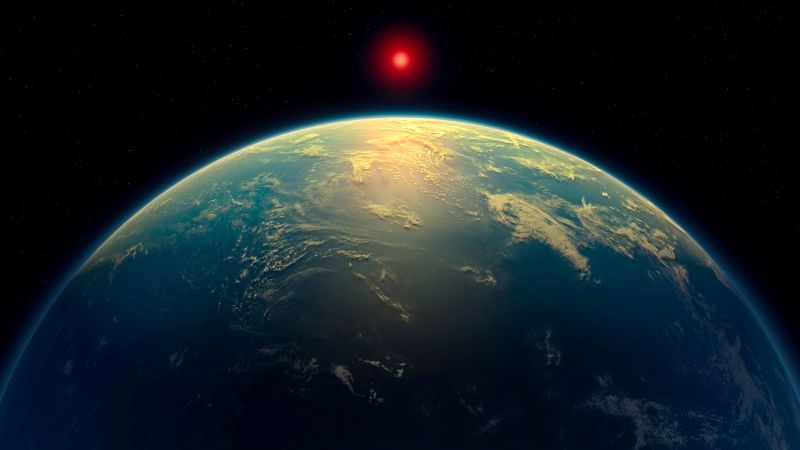A groundbreaking study has emerged from a team of astronomers employing the advanced capabilities of the James Webb Space Telescope. They report promising signs of a potential biosignature on an exoplanet designated K2-18b. This discovery could indicate past or present biological activity; however, the researchers and other specialists urge caution, refraining from labeling it as conclusive proof of extraterrestrial life. The findings are carefully positioned within the scientific community, suggesting a mixture of excitement and skepticism as further investigation is warranted.
K2-18b, located approximately 124 light-years from Earth, captivates researchers with its intriguing structure and positioning. The planet has been classified as a candidate Hycean world, defined as a planet that could be enveloped entirely in liquid water and possesses a hydrogen-rich atmosphere. Lead study author Nikku Madhusudhan, a professor of astrophysics and exoplanetary science at the University of Cambridge’s Institute of Astronomy, explains that their investigation revealed chemical signatures in K2-18b’s atmosphere, likely indicative of dimethyl sulfide (DMS) and possibly dimethyl disulfide (DMDS). On our planet, these compounds are typically produced by microbial life, mainly from marine phytoplankton.
The study, recently published in The Astrophysical Journal Letters, builds on a prior theoretical framework established by Madhusudhan and colleagues in 2021. They posited that the presence of liquid water oceans on K2-18b could suggest a habitable environment. Their current results indicate that this exoplanet lies within the habitable zone of its star, which is an optimal range where conditions might allow for the existence of liquid water, thus supporting the possibility of life.
Madhusudhan elaborated on their findings, noting that the high levels of sulfur-based gases (including DMS and DMDS) were anticipated on Hycean worlds. The data collected aligns with those previous predictions, further reinforcing their hypothesis. Yet, the researchers remain cautious, acknowledging that these molecules could potentially arise from unknown chemical processes not linked to biological activity. As such, while their observations are compelling, they do not unequivocally confirm the presence of life beyond our planet.
The research team’s methodology involved different instruments within the Webb Telescope. This latest detection utilized the Mid-Infrared Instrument, which enhanced the clarity of the signal they received. Madhusudhan stated that these observations represented an independent line of evidence which refrains from overlapping with previous readings, reinforcing the reliability of their findings.
Despite the excitement surrounding these results, more data is necessary before declaring definitive evidence of life on K2-18b. To solidify their conclusions, the team advocates for additional observations—projecting that 16 to 24 hours of follow-up studies could yield further insights. Madhusudhan emphasized the importance of skepticism in scientific exploration, asserting that robust results come from repeated testing and verification.
Notably, the broader scientific community remains divided on interpretations of K2-18b. Experts, including MIT’s astrophysicist Sara Seager, have varying opinions regarding the nature of the planet itself. While some favor the Hycean hypothesis, others speculate about the possibility of a hot magma ocean beneath its atmosphere or categorize it as a mini-Neptune. K2-18b’s characteristics include a mass around 8.6 times that of Earth and a size approximately 2.6 times larger.
Seager posited that the current findings represent only a tentative step; the suggested biosignature will linger in the “candidate category” until more concrete evidence emerges. She emphasizes the long history of astronomers grappling with atmospheric gases indicated as signs of life, highlighting potential pitfalls of premature conclusions in light of overwhelming excitement regarding new discoveries. The debates extrapolated from K2-18b prompt considerations of the need for rigorous scrutiny of data as researchers endeavor to discern the existence and nature of life beyond Earth.
In conclusion, as scholars continue to assess the possibilities of life on K2-18b, their enthusiasm speaks to a broader quest for knowledge and understanding in the fields of astronomy and astrobiology. Though the observations from the James Webb Space Telescope hold potential significance, the journey toward conclusive evidence remains an ongoing endeavor filled with meticulously crafted investigations and cautious aspirations for discovery.












